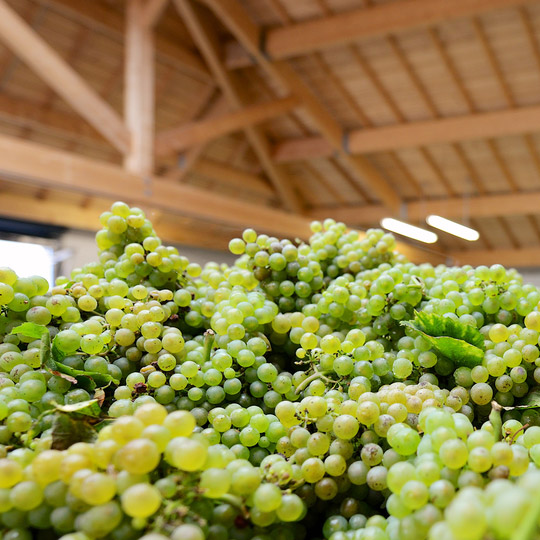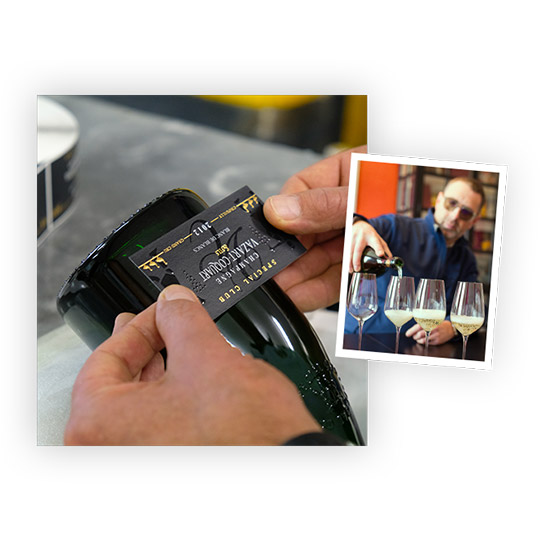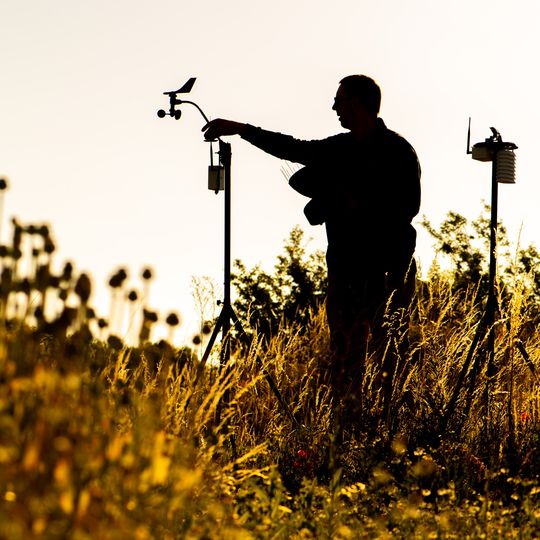
The art of Champagne
Creating a wine, a champagne, is a long process. Years are necessary and it is essential to master each step, of which there are many. Here are some of the steps, integral to our profession and our art.
The grapes
In the beginning was the vine and its fruit, the grape.
In the vineyard
Even before the grapes are picked, much work is carried out on the vines over several months. Pruning, tying, disbudding and then shoot positioning are long manual operations carried out between December and July. A considerable amount of time is spent in and among the vines. In addition, there is also biological protection, cropping and working of the soil to be performed.
The harvest
The harvest is the climax of a year’s work. After long ripening and meticulous picking by hand, the grapes are taken to the press. Each action is important and each grape is precious. There is no room for waste and sorting is imperative. This is the price of quality.
Pressing
Over a several hour period, the fruit of the vines becomes juice and the long process of vinification starts. Our presses, at the cutting edge of technology, are nonetheless gentle and delicate. Then the harvest is transferred to the vat cellars.

The wine
The grape juice is saturated with sugar, so a transformation needs to occur.
Vinification

This transformation firstly involves alcoholic fermentation. The yeast consumes the sugar to produce alcohol. The wine is brought into being and, over several months, it will gently clarify. The grapes from each plot are made into wine separately in order to highlight the expression of each plot.
Tasting

During and after vinification, it is essential for us to discover these wines. Even if they all come from the terroir of Chouilly, they are nonetheless very different. We therefore taste them several times to determine their characteristics and potential.
Blending

Blending is a speciality of the Champagne region. Traditionally, the cellar masters blend the wines, grape varieties and vintages. Depending on the cuvée that we are producing, we blend vintages, plots or sometimes grape varieties. Naturally, vintage champagnes are made from grapes from a single year.
Racking

This is the word used in the Champagne region to designate bottling. On our estate, it takes place in May. This complex operation must anticipate the creation of foam, the magical moment when the bubbles emerge in the bottle. It is once again the yeast that enables this small miracle.
Riddling

The yeast has fermented at length in the bottles for months, enabling formation of the foam. However, before we sell the champagne, we need to collect this yeast in the bottle’s neck to prepare for disgorging. Shaking involves gently bring the deposits down towards the bottle’s neck thanks to precision machines called gyropalettes.
Disgorging

Disgorging, the last operation of vinification, makes it possible to both remove the deposits and, where necessary, add a little sugar, an operation called dosage. This is the point at which a champagne becomes “Extra Brut”, “Brut” or “Medium-Dry”. The final step involves inserting the cork and keeping it in place thanks to the champagne wire called the muselet.
Exaltation of the senses
Our champagne is ready and can be enjoyed by you during your aperitifs, meals and celebrations.
Labelling
What would a champagne bottle be worth without a quality presentation, making it possible, at first glance, to notice the sumptuousness of the wine that you have just brought? It may seem superficial, but in fact it is indispensable. The label is the ambassador of our champagne.
Tasting
Finally, it is time to discover, to smell, to sample and to taste this divine beverage. All your senses are exalted: your hearing when the bottle is opened and the champagne served, your sight as you observe the glass, your nose of course, the sense of touch on the lips and lastly your sense of taste.


Innovation
Our profession is a mixture (or a blend, should I say) which enables us to combine tradition and innovation.
In the vineyard
Naturally, a winemaker’s experience is essential and is the fruit of years of learning and exchanging. Nonetheless, technology also helps us, in cutting-edge domains such as meteorology, geo-positioning and on-board electronics. They are all precious tools which supplement the know-how that previous generations have passed down to us.
In the cellar
Similarly, controlling and managing temperatures, automatic riddling and mechanical labelling are all automated systems that make it possible to relieve winemakers, allowing them to concentrate on what is essential: quality.



